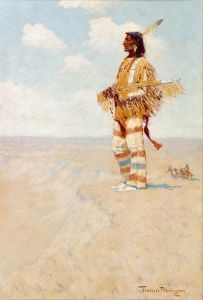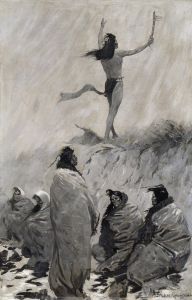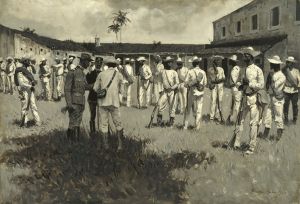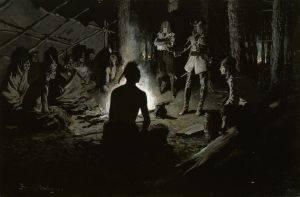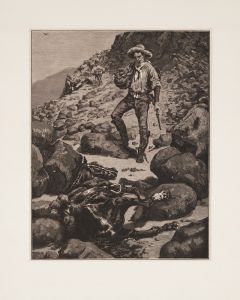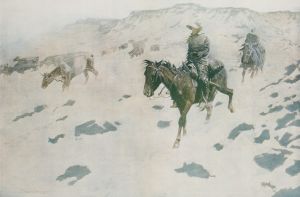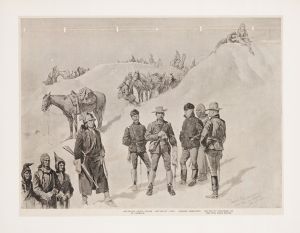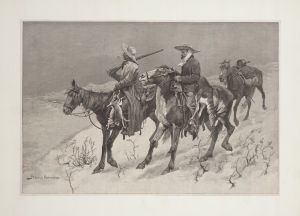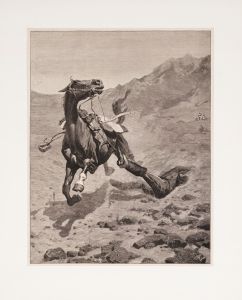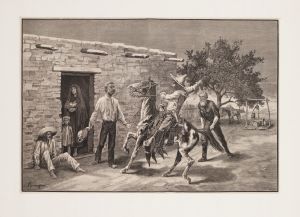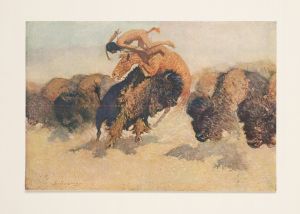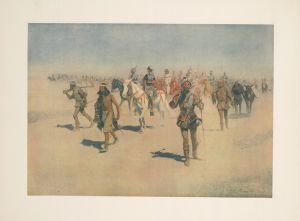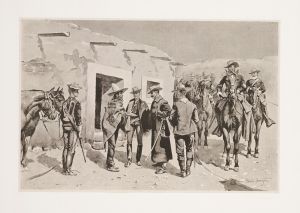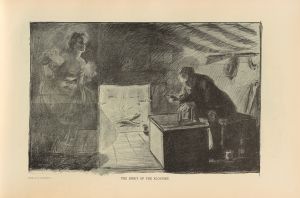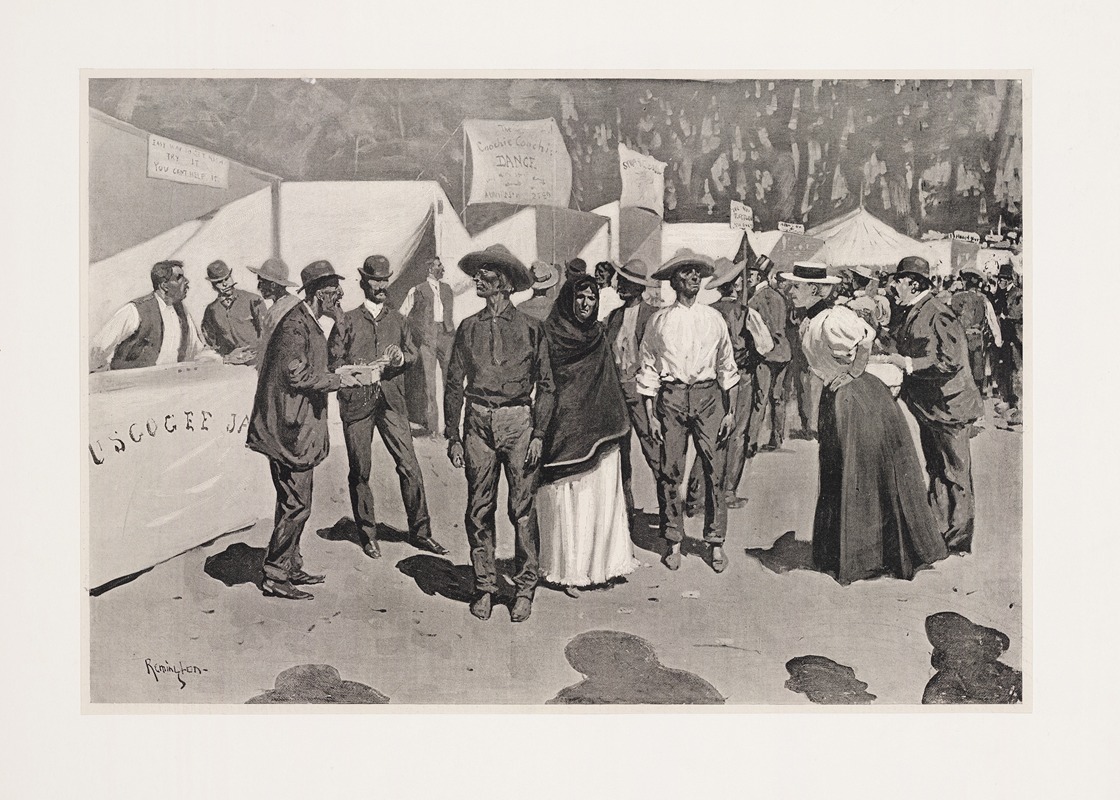
Paying the Indians for the Cherokee strip–scenes around the government paymaster’s quarters
A hand-painted replica of Frederic Remington’s masterpiece Paying the Indians for the Cherokee strip–scenes around the government paymaster’s quarters, meticulously crafted by professional artists to capture the true essence of the original. Each piece is created with museum-quality canvas and rare mineral pigments, carefully painted by experienced artists with delicate brushstrokes and rich, layered colors to perfectly recreate the texture of the original artwork. Unlike machine-printed reproductions, this hand-painted version brings the painting to life, infused with the artist’s emotions and skill in every stroke. Whether for personal collection or home decoration, it instantly elevates the artistic atmosphere of any space.
"Paying the Indians for the Cherokee Strip–Scenes Around the Government Paymaster’s Quarters" is a painting by the renowned American artist Frederic Remington. Known for his vivid depictions of the American West, Remington's work often focused on the lives and experiences of Native Americans, cowboys, and the U.S. Cavalry during the late 19th and early 20th centuries. This particular painting captures a significant historical event related to the Cherokee Strip, also known as the Cherokee Outlet.
The Cherokee Strip was a region of land in present-day Oklahoma, originally granted to the Cherokee Nation in the 1830s as part of their forced relocation from the southeastern United States, known as the Trail of Tears. The land was intended to serve as a buffer zone between the Cherokee Nation and other tribes. However, by the late 19th century, the U.S. government sought to open this land for settlement by non-Native Americans, leading to negotiations with the Cherokee Nation.
In 1893, the U.S. government agreed to pay the Cherokee Nation for the land, which led to the opening of the Cherokee Strip Land Run on September 16, 1893. This event saw thousands of settlers rushing to claim plots of land in what was one of the largest land runs in U.S. history. The painting by Remington likely depicts scenes from the period when government officials were making payments to the Cherokee for the land, a process that involved significant logistical challenges and interactions between government representatives and Native American leaders.
Frederic Remington's work is characterized by its attention to detail and dynamic composition, capturing the essence of the American frontier. In "Paying the Indians for the Cherokee Strip," Remington would have employed his skills to portray the tension and complexity of this historical moment. His paintings often reflect a deep understanding of the cultural and social dynamics of the time, providing a window into the past.
Remington's art is celebrated for its historical accuracy and artistic merit, making him one of the most important chroniclers of the American West. His works are housed in numerous museums and collections, and they continue to be studied for their portrayal of American history and culture.
While specific details about this painting, such as its current location or the exact year of its creation, may not be readily available, it remains an important piece within Remington's oeuvre, illustrating a pivotal moment in the history of Native American and U.S. government relations.





